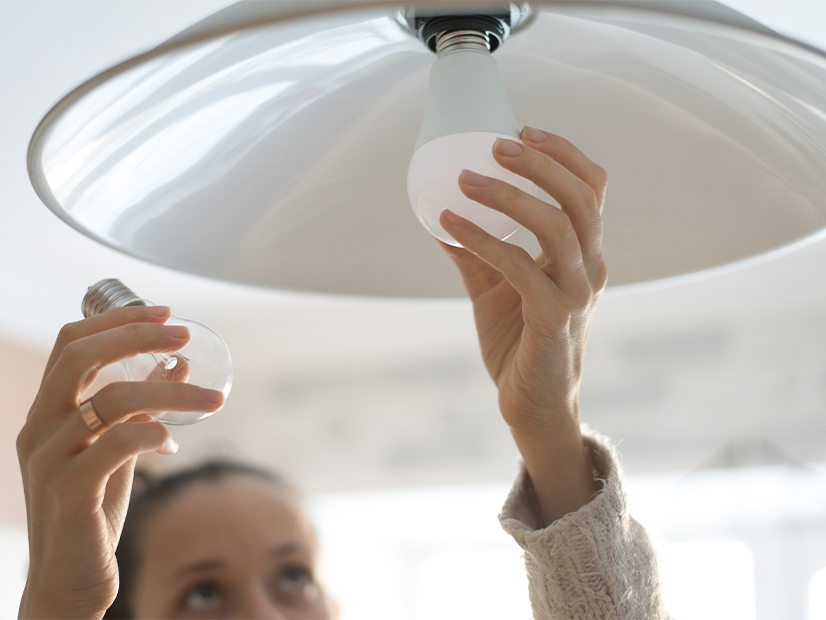The Department of Energy has released finalized energy efficiency standards for “general service lamps, which include the most common types of commercial and residential light bulbs.”
The congressionally mandated standards go into effect in July 2028 for newly produced bulbs and are expected to save $1.6 billion annually on energy costs, cut waste and avoid carbon emissions. Over 30 years, DOE projects the standards will save more than $27 billion on utility bills and cut 70 million metric tons of carbon emissions.
“Making common household appliances more efficient is one of the most effective ways to slash energy costs and cut harmful carbon emissions,” Energy Secretary Jennifer Granholm said in a statement April 12.
DOE continues to implement the law on efficiency standards, and so far under the Biden administration, it has promulgated standards that cumulatively save $1 trillion in energy costs over 30 years and could save the average family $100 a year through lower utility bills. The standards cumulatively will cut 2.5 billion metric tons of greenhouse gas emissions, which is equivalent to 22 coal plants, over 30 years.
The standards increase the efficiency level from 45 lumens per watt to more than 120 lumens per watt for the most common light bulbs, which DOE said is in line with industry trends shifting toward more efficient and longer-lasting LED bulbs. The new standards will save 4 quadrillion BTUs, or 17%.
The department already has implemented efficiency standards that cannot be met by old, inefficient incandescent bulbs and were specifically directed by the Energy Independence and Security Act of 2007. The standards issued April 12 are part of a congressional requirement that DOE regularly review efficiency standards to ensure consumers benefit from technological improvements.
The new standards can be met with a broad variety of LED bulbs, but not compact fluorescent bulbs (CFLs), which the market is transitioning away from. LEDs last longer, use less energy and do not contain mercury like CFLs.
The American Council for an Energy Efficient Economy (ACEEE) welcomed the standard and noted that most light bulbs on the market are LED. A common bulb equivalent to old 60-watt models will use no more than 6.5 watts under the new standards once they go into effect. Many LED models today use 8 to 10 watts, while the harder-to-find compact fluorescents use about 13 watts, ACEEE said.
“LED technology has gotten even better in recent years, and these standards will ensure that all products on the market catch up with the latest efficiency advances,” said Andrew deLaski, executive director of ACEEE’s Appliance Standards Awareness Project.


